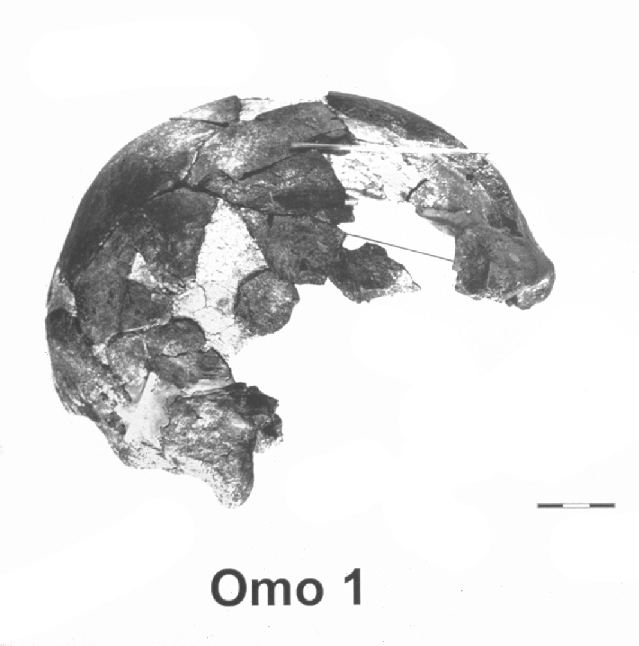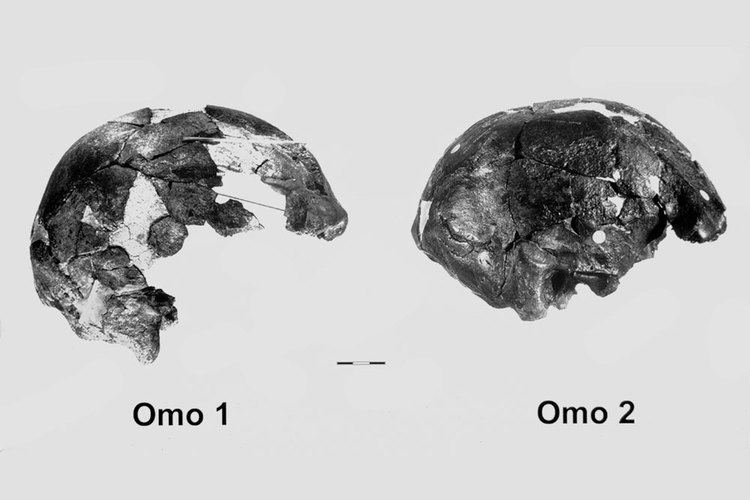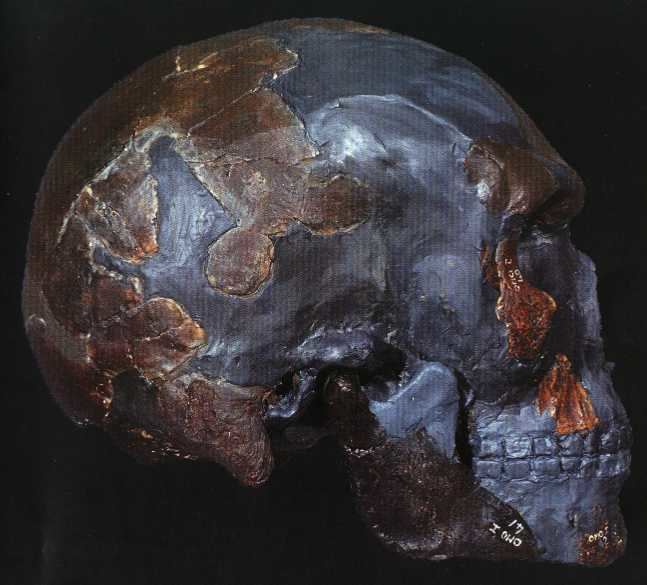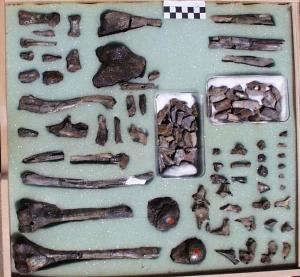 | ||
Skeletons of mysterious human species documentary on unexplained human remains found
The Omo remains are a collection of hominin bones discovered between 1967 and 1974 at the Omo Kibish sites near the Omo River, in Omo National Park in south-western Ethiopia. The bones were recovered by a scientific team from the Kenya National Museums directed by Richard Leakey and others. The remains from Kamoya's Hominid Site (KHS) were called Omo I and those from Paul I. Abell's Hominid Site (PHS) Omo II.
Contents
- Skeletons of mysterious human species documentary on unexplained human remains found
- Fossils
- Dating and implications
- References

Fossils

The bones include two partial skulls, four jaws, a legbone, around two hundred teeth and several other parts. The two specimens, Omo I and Omo II, differ in morphological traits. The Omo II fossils indicate more archaic traits. Studies of the postcranial remains of Omo I indicate an overall modern human morphology with some primitive features. The fossils were found in a layer of tuff, between a lower, older geologic layer named Member I and a higher, newer layer dubbed Member III. The Omo I and Omo II hominin fossils were taken from similar stratigraphic levels over Member I.

Because of the very limited fauna and the few stone artifacts that were found at the sites when the original Omo remains were discovered, the provenance and estimated age of the Kibish hominids are uncertain. In 2008, new bone remains were discovered from Awoke's Hominid Site (AHS). The AHS fossil's tibia and fibula were unearthed from Member I, the same layer from which the other Omo remains derive.
Dating and implications

About 30 years after the original finds, a detailed stratigraphic analysis of the area surrounding the fossils was done. The Member I layer was argon-dated to 195,000 years ago and the (higher layer) Member III to 105,000 years ago. Numerous recent lithic records verify the tool technology from Members I and III to the Middle Stone Age.

The lower layer, Member I, (below the fossils) is considerably older than the 160,000-year-old Herto remains designated as Homo sapiens idaltu. The rainy conditions at that time—which are known from isotopic ages on the Kibish Formation corresponding to the ages of Mediterranean sapropels—suggest increased flow of the Nile River and, therefore, increased flow of the Omo River. But the climates changed such that after 185,000 years ago conditions were so dry as to not allow speleothems to grow in the caverns in the Levantine land-bridge region, the vital inroad for migration to Eurasia.

Parts of the fossils are the earliest to have been classified by Leakey as Homo sapiens. In 2004, the geological layers around the fossils were dated, with the age o9f the Kibish hominids estimated at around 195 ± 5 ka [thousand years ago]. This would make the fossils the oldest known Homo sapiens remains. Since this discovery is the earliest thus far, Ethiopia is the among the main proposed locations for the cradle of Homo sapiens.

The Recent African Origin theory suggests that H. sapiens sapiens evolved in Africa and migrated from there to the rest of the world, most recently some 70,000 years ago. Recent DNA evidence has shown that subsequent interbreeding took place amongst sapiens and their archaic relatives, Neanderthal and Denisovan.
